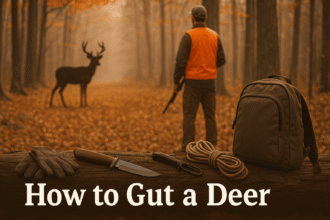Archery Hunting: Mastering the Art of Bowhunting

Archery hunting is a challenging and rewarding pursuit that requires skill, patience, and a deep connection with nature. As an ancient form of hunting, archery allows for a closer and more intimate hunting experience. In this comprehensive guide, we will delve into the world of archery hunting, exploring the equipment, techniques, and strategies that will help you become a successful and ethical bowhunter.
Table of Contents
- Table of Contents
- 1. Introduction: The Allure of Archery Hunting
- 2. Choosing the Right Bow for Archery Hunting
- 3. Essential Archery Hunting Equipment
- 4. Archery Shooting Techniques and Form
- 5. Scouting and Stand Placement Strategies
- 6. Camouflage and Concealment
- 7. Shot Placement and Ethical Hunting
- 8. Hunting Techniques and Strategies
- 9. Archery Hunting Safety and Ethics
- 10. Frequently Asked Questions (FAQs)
- 11. Conclusion: Embrace the Challenge and Beauty of Archery Hunting
Table of Contents
1. Introduction: The Allure of Archery Hunting
The Rich History and Tradition of Bowhunting
Archery hunting has been practiced for thousands of years, deeply rooted in the history and traditions of many cultures. Engaging in archery hunting allows us to connect with our ancestors and embrace the time-honored methods of hunting with a bow and arrow.
Embracing the Close Connection with Wildlife
Archery hunting offers a unique opportunity to get up close and personal with wildlife. The intimacy of the hunt requires hunters to sharpen their senses, learn animal behavior, and become one with the environment. The close-range encounters foster a deep appreciation and understanding of nature.
2. Choosing the Right Bow for Archery Hunting
Understanding Different Types of Bows
There are various types of bows used in archery hunting, including recurve bows, compound bows, and traditional longbows. Each type has its advantages and considerations, such as simplicity, power, or technological advancements. Select a bow that matches your skill level, physical abilities, and hunting style.
Considerations for Draw Weight and Length
When choosing a bow, consider your physical strength and capabilities. Select a draw weight that allows you to draw the bow comfortably without sacrificing accuracy. Ensure the bow’s draw length is suitable for your arm length and shooting form.
Selecting the Proper Arrow and Broadhead
Choose arrows and broadheads that are appropriate for your bow and the game you intend to hunt. Consider factors such as arrow weight, spine stiffness, and broadhead type (fixed-blade or mechanical) based on your shooting style, desired game, and local hunting regulations.
3. Essential Archery Hunting Equipment
Bow Accessories: Sights, Releases, and Stabilizers
Equip your bow with accessories that enhance accuracy and performance. Consider adding a sight to improve aiming, a release aid for consistent and smooth releases, and a stabilizer to reduce bow vibration and improve balance.
Protective Gear: Arm Guards, Gloves, and Finger Tabs
Protective gear is essential for archery hunting. Wear an arm guard to prevent bowstring slap on your forearm, gloves to protect your fingers from repetitive shooting, and finger tabs to enhance consistency and control while drawing and releasing the bowstring.
Tracking and Recovery Tools: Binoculars, Range Finders, and Blood Trailing Kits
Carry essential tools to aid in tracking and recovering game. Binoculars help with spotting game from a distance, range finders assist in accurately judging distances, and blood trailing kits aid in finding wounded animals.
4. Archery Shooting Techniques and Form
Establishing a Consistent Stance and Anchor Point
Develop a consistent shooting stance that provides stability and balance. Find an anchor point on your face or body that allows for repeatable and accurate shot placement. Consistency in stance and anchor point contributes to shooting precision.
Mastering Proper Bow Grip and Release
Maintain a relaxed and consistent grip on the bow handle, allowing for a natural alignment of the bowstring. Practice various release techniques, such as using a finger release or a mechanical release aid, to find the method that suits you best.
Practicing Shooting Drills and Maintaining Accuracy
Regularly practice shooting drills to enhance accuracy and muscle memory. Engage in target practice at varying distances, angles, and conditions to simulate real hunting scenarios. Consistent practice is essential for maintaining shooting skills and confidence.
5. Scouting and Stand Placement Strategies
Understanding Wildlife Behavior and Habitat
Develop a deep understanding of the behavior, movement patterns, and habitat preferences of the game you are hunting. Study their feeding, bedding, and watering areas to identify high-traffic zones and strategize your hunting approach.
Identifying Game Trails, Rubs, and Scrape Lines
Scout for game trails, rubs (marks left by bucks on trees), and scrape lines (ground markings made by deer) as signs of animal activity. These indicators help you identify travel routes and determine suitable stand placements.
Selecting Strategic Stand Locations for Success
Choose stand locations based on your knowledge of game movement patterns and feeding areas. Look for natural features like funnels, pinch points, or water sources that concentrate animal activity. Set up stands downwind and out of sight to maximize stealth and scent control.
6. Camouflage and Concealment
Utilizing Camouflage Clothing and Gear
Invest in high-quality camouflage clothing that matches your hunting environment. Camouflage patterns help break up your silhouette and blend into the surroundings, increasing your chances of remaining undetected.
Concealing Scent and Sound
Minimize human scent by using scent-control products and taking precautions to reduce odor. Walk quietly and be aware of the noise you make, as animals have keen hearing. Utilize stalking techniques that minimize sound and movement.
Utilize natural cover, such as trees, bushes, or terrain features, to conceal your presence while hunting. Use the landscape to your advantage, positioning yourself in locations that provide natural camouflage and enhance your stealth.
7. Shot Placement and Ethical Hunting
Understanding the Anatomy and Vital Organs of Game
Develop a thorough understanding of the anatomy and vital organs of the game you hunt. Focus on shot placement that ensures a quick, clean, and ethical kill. Target vital areas such as the heart, lungs, or liver to maximize effectiveness and minimize suffering.
Practicing Ethical Shot Selection for Quick and Humane Kills
Exercise patience and restraint, waiting for ethical shot opportunities that offer a clear and effective kill zone. Avoid taking shots that are beyond your effective range or when the animal is in a poor position. Make ethical decisions that prioritize a humane harvest.
Tracking and Recovering Wounded Game
In the event of a less-than-perfect shot, it is essential to have the skills and tools necessary for tracking and recovering wounded game. Learn blood trailing techniques and carry necessary equipment such as a blood trailing kit, flashlight, and markers to aid in the recovery process.
8. Hunting Techniques and Strategies
Still Hunting: Stalking Game on Foot
Still hunting involves slowly and quietly stalking game on foot, using cover and terrain to remain undetected. Move methodically, pausing frequently to observe and listen for signs of game activity. Use available cover and natural features to get within effective bow range.
Tree Stand Hunting: Utilizing Elevated Platforms
Tree stand hunting involves positioning yourself on an elevated platform, such as a tree stand or a hunting blind in a tree. Choose stand locations based on scouting observations and carefully consider wind direction and access routes. Tree stand hunting provides an advantage by placing you above the line of sight of game animals.
Ground Blind Hunting: Concealment at Ground Level
Ground blind hunting involves using a portable blind or natural cover to conceal yourself at ground level. Set up the blind in strategic locations and practice scent control and stealth while entering and exiting. Ground blind hunting offers excellent concealment and versatility in various hunting situations.
9. Archery Hunting Safety and Ethics
Prioritizing Safety in All Aspects of Archery Hunting
Safety should always be the top priority. Familiarize yourself with safe archery practices, including proper handling of bows and arrows, safe shooting areas, and understanding the capabilities and limitations of your equipment. Always wear protective gear, including a safety harness when using elevated stands.
Respecting Wildlife and Their Environment
As an archery hunter, it is crucial to have respect for wildlife and their natural environment. Observe and appreciate the wildlife around you, minimize disturbance to their habitat, and leave no trace. Adhere to ethical hunting practices, ensuring that you take only what you intend to consume and making efforts to minimize suffering.
Abiding by Local Hunting Regulations and Laws
Familiarize yourself with local hunting regulations and laws, including licensing requirements, hunting seasons, bag limits, and any specific rules regarding archery hunting. Complying with these regulations helps maintain wildlife populations and ensures the sustainability of hunting traditions.
10. Frequently Asked Questions (FAQs)
Q1: How far can an archer effectively shoot while hunting?
A1: Effective shooting distance can vary depending on factors such as skill level, equipment, and hunting conditions. However, most ethical bowhunters limit their shots to 30-40 yards or closer to ensure accuracy and ethical kills.
Q2: What are the advantages of archery hunting over firearm hunting?
A2: Archery hunting offers a more intimate and challenging experience compared to firearm hunting. It allows for a closer connection with nature, quieter hunting methods, and longer hunting seasons in many areas. Archery hunting also promotes improved shooting skills and a deep appreciation for the art of bowhunting.
Q3: Can I hunt different types of game with a bow?
A3: Yes, archery hunting provides opportunities to pursue various game species, including deer, elk, turkey, bear, and small game. Research and understand the specific regulations and requirements for each species and location to ensure compliance and a successful hunting experience.
11. Conclusion: Embrace the Challenge and Beauty of Archery Hunting
Archery hunting is a timeless pursuit that allows hunters to connect with nature, challenge their skills, and experience the thrill of a close-range hunt. By understanding the equipment, mastering shooting techniques, and employing effective hunting strategies, you can embark on a rewarding archery hunting journey. Embrace the challenge, respect the game, and enjoy the beauty of the natural world as you become a skilled and ethical bowhunter.







